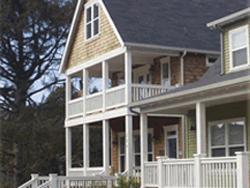Millennials Mimicking Parents' Home Behaviors, Reports Builder Online
Washington, DC, August 13, 2020-Millennials are mimicking their parents' housing choices, moving towards larger homes in the suburbs with better-quality materials, though the popularity of LVT runs counter to that trend, reports Builder Online.
“Unlike the apartment boom, which was centered in urban and high-density suburban areas, the single-family housing boom is happening now in lower-density suburbs and outlying areas, and millennials are the ones driving this shift. This mirrors how their parents’ housing choices fueled suburban sprawl, where the affordable homes were, in the ’80s and ’90s," reports the publication.
“Contrary to what many have predicted, the millennial generation may not be a new tribe with housing preferences and a culture unlike any other generation. They seem to be mimicking the actions of their parents in many ways. The majority do aspire to own homes-as soon as they can afford it and as soon as it suits their life stage. If there were any doubts about this, the ongoing COVID-19 crisis has erased them by reviving the mantra of 'home is where the heart is.'
“Home Innovation’s Annual Builder Practices Survey has been documenting changes in new-home construction for over 25 years. Just because the starter-home market is currently dominated by affordable homes, it does not favor low-end materials across the board. For example, in the past year:
- The finished floor area of starter homes continued to climb-from 1,675 to 1,735 square feet.
- Granite continued to lead the kitchen countertop market with 50% share, but quartz saw impressive growth from about 17% to 26% share. Less expensive options like laminate and solid surfacing saw shares drop.
- Wood and composite windows gained share, and the traditionally less expensive options of vinyl and aluminum lost share.
- The share for fiberglass in the new-home entry door market grew to almost 50%, while lower-cost steel doors declined.
- Concrete tiles and metal roofing became increasingly popular, while asphalt shingles saw a modest decline in share.
- Brick exteriors saw a big jump, after a decades-long slide.
“But some product categories associated with entry-level homes grew at the expense of higher-end materials.
- Resilient flooring--particularly luxury vinyl tile--grew rapidly while solid wood flooring shares dipped.
- Vinyl siding saw a modest gain, reversing a long-term trend.
- Share of concrete materials (poured and pavers) was up for patios and porches, and the higher-cost alternatives of clay brick and natural stone were down.
- Hinged patio door share dropped sharply, now representing only about one-third of the market; sliders now represent the remaining two-thirds of this market.
- PE-RT piping experienced a growth spurt as a lower-cost plumbing option.”
